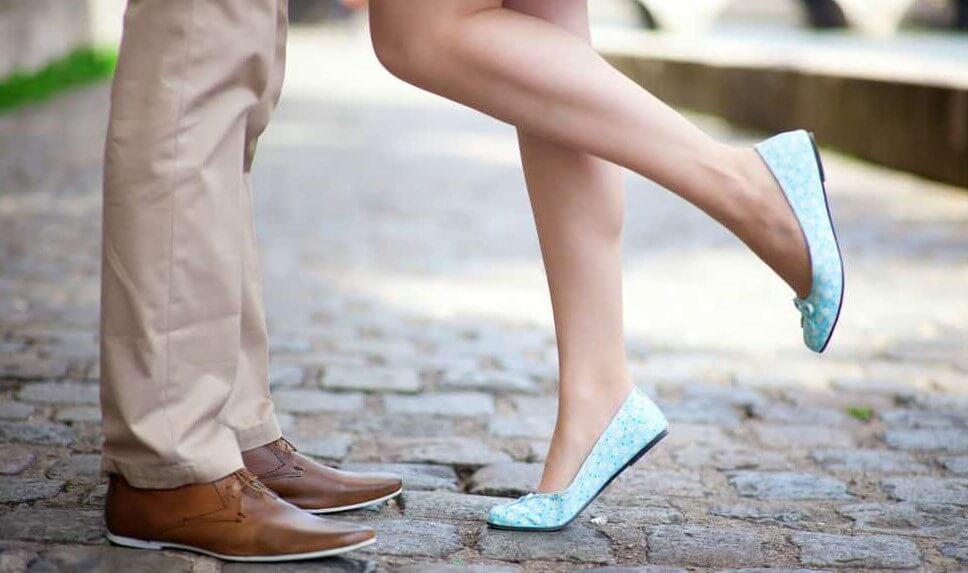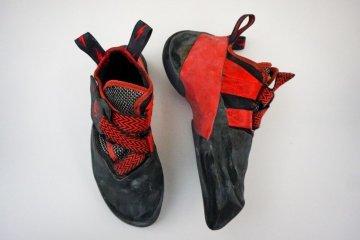Slips and falls are major causes of workplace injuries and accidents, and slippery surfaces can pose a significant risk to workers. That’s why slip-resistant shoes are essential in many industries to reduce the risk of accidents and injuries.
In this article, we will explore how to make shoes slip-resistant, providing tips and advice on how to transform ordinary shoes into non-slip shoes that can provide a better grip on slippery surfaces.
Whether you’re working in the food service, healthcare, or hospitality industry, or simply looking for ways to make your shoes non-slip for everyday use, this article will offer valuable insights into the process of making shoes slip-resistant.
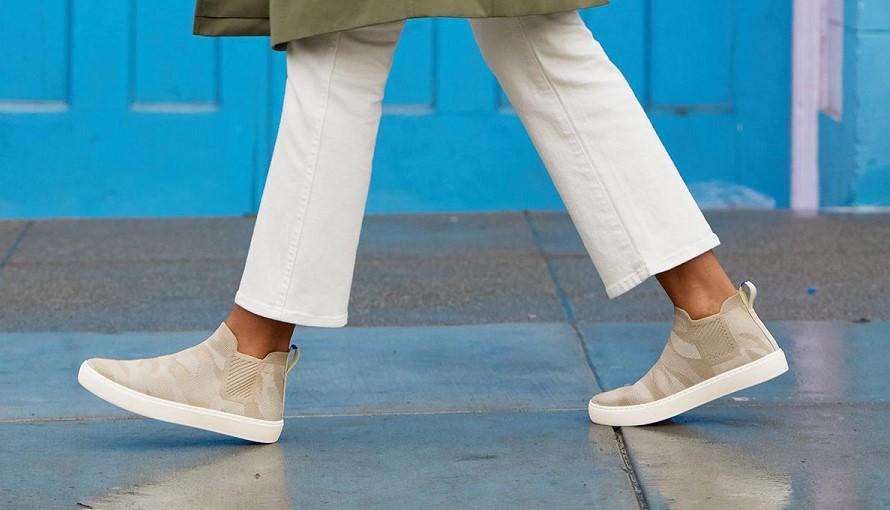
Why are slip-resistant shoes needed?
Make your shoes non-slip to prevent slips and fall in the workplace or in other areas where the surface may be slippery, wet, or oily.
Slips and falls can result in injuries, ranging from minor bruises to serious injuries, such as broken bones, head injuries, or spinal cord injuries.
Slip-resistant shoes are designed to provide better traction on ice or slippery surfaces and wet floors to reduce the risk of falls, making them an essential safety feature in many workplaces.
A workplace with non-slip shoes
Usually, people are involved in activities that involve heavy and moving activities and might not pose an issue to those wearing slippers. I think it’s ok to work from a desk, but I’ve never had an issue.
If it’s just me wearing general office shoes, then think again – general office boots, compared to a slip-resistant shoe, offer no safety or protection needed even for people without a manual laboring job or moving around.
Keeping foot traction is essential, as is gripping the ground. A few offices in the United Kingdom have slippery surfaces because of a combination of chemicals, such as grease, oil stains, etc.
In such workplaces, you better make shoes non-slip, as otherwise, you might seriously injure yourself. The ways to do that (grip pads, rubber soles, rubber glue, traction spray) will be discussed later in this article. Stay tuned to find out!

Reduce accidents at home
Unless you’re a maintenance person, learning how to make shoes non-slip is a good idea. Slip-resistant shoes are also the best footwear to clean the floors and wash bathrooms because they can handle slick surfaces better than conventional footwear.
Reduce accidents in kitchens
If you need to work in the kitchen, then slippery shoes are definitely not recommended to clean the floor. Find out how to make shoes non-slip in order to prevent the risk of spilling oil while cooking and injuring yourself.
Advantages of non-slip shoes:
There are many advantages of wearing non-slip shoes, especially in environments where there are wet or slippery surfaces.
The main advantage is that they help to prevent slips and falls, which can result in serious injuries such as broken bones, sprains, or concussions. This is particularly important in workplaces where employees are required to stand or walk for extended periods, such as in restaurants, hospitals, or construction sites.
Non-slip shoes can also improve productivity, as workers can move more confidently and efficiently without having to worry about slipping or falling.
Additionally, non-slip shoes can be more comfortable than regular shoes, as they often have additional support and cushioning.
Overall, wearing non-slip shoes can provide both safety and comfort, making them an essential item for many workers.
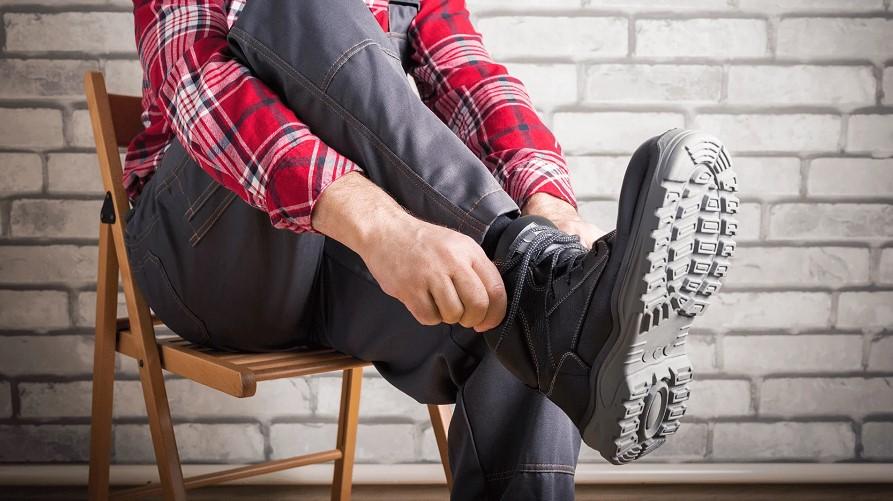
Suitable material for non-slip shoes
When choosing the material for non-slip shoes or footwear, it’s often hard to determine what makes shoes slip-resistant. Before using these shoes in a business environment, there can be no guarantee of their durability.
Nevertheless, if you are looking to purchase something, it’s important to test the materials that make shoes non-slip first.
Test non-slip shoes by squatting in them around your home and then assessing how they behave. Rubber soles usually make shoes non-slip – they may also be used on different floors to determine if traction in wet and dry conditions can occur.
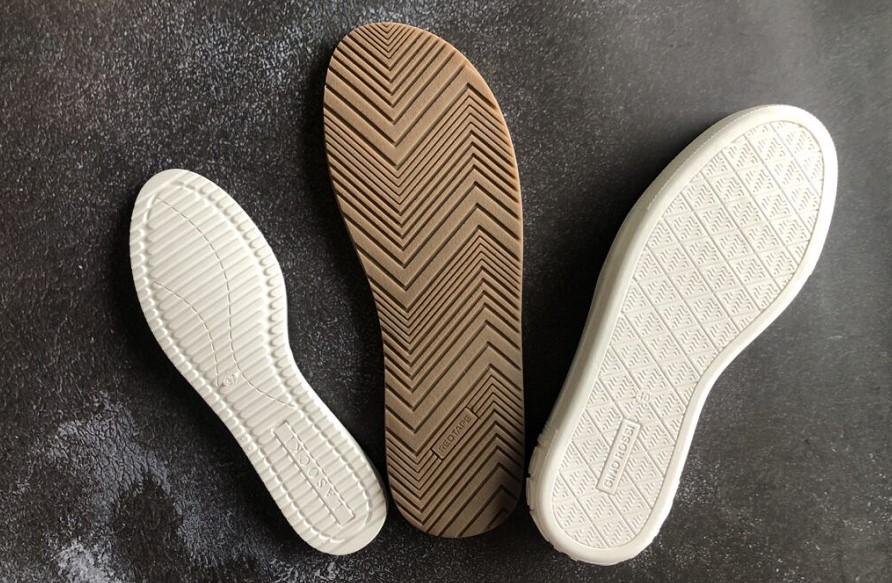
How do you stop shoes from being slippery?
When it comes to making slip-resistant shoes, the type of shoe and the materials used can make a significant difference.
Making slip-resistant shoes is an important safety measure that can help prevent accidents and injuries, especially when working in environments with wet surfaces or hardwood floors.
Overall, wearing non-slip shoes can significantly reduce the risk of slips and falls, making it essential to consider slip-resistant materials when choosing footwear.
All of the techniques below are great to make shoes non-slip. There are various types of grip pads, rubber soles, scrubbing, tapes, nail files, sandpaper grippers, brushes, and band-aids too.

Use ice grips
Ice grips are shoe accessories for providing grip pads on slippery terrain. The spikes are clamped onto your heel or shoe sole to make your footwear slip-resistant.
It improves the grip and keeps you safe. Ice grippers provide the best protection when using snow and ice. They create non-slip soles on your slippery shoes and are used for skiing and snowboarding.
Visit a cobbler and have them re-sole your shoes
The only permanent method of keeping shoes from slipping is by having them replaced with new rubber. It means taking away the old and replacing it. The cobbler adjusts the soles of the shoes to fit more comfortably. Running shoes can be costly, but it is an effective way to protect against accidental falls.
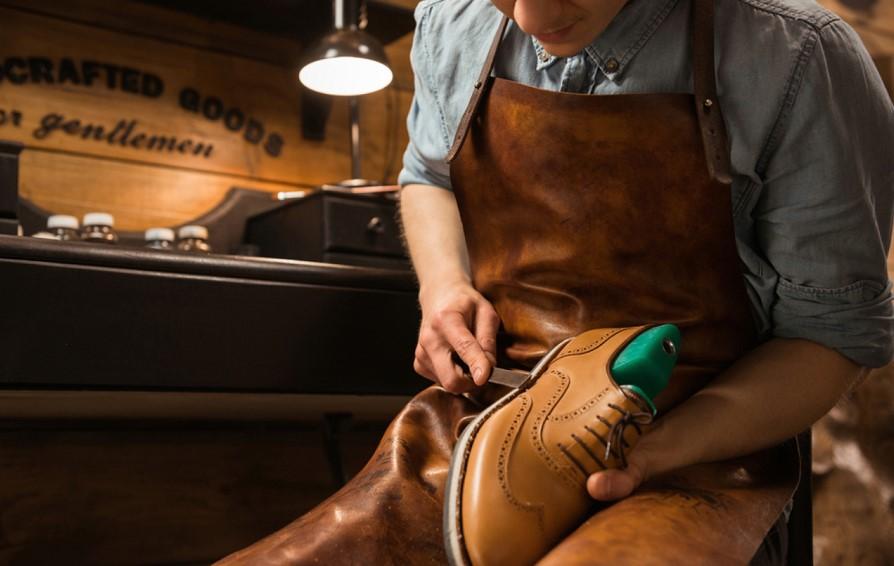
Use a hot glue gun
A hot glue gun can make your boots non-slick and easy to put on. Rubber glue is easy to use with no need for any training.
First, put the glue gun on and place a glue stick onto the gun. Wait for a few seconds for the hot glue to cool down.
Then, take your boots upside down, so you can get them dirty. Use rubber glue to make small dots in your shoes. You can even create crisscrosses around rubber. Once the glue has dried, let the mixture sit for around 10 minutes.
Use sandpaper
You could also use sandpaper to keep a shoe from sliding off. Sanding on the rubber sole creates texture and provides added grip, as one walks in the shoe.
You’ll probably have no need for specific sandpaper. You just need 50-gram sandpaper and your footwear. It will help you to get good traction on your rubber sole while walking on a slippery surface and prevent you from falling.
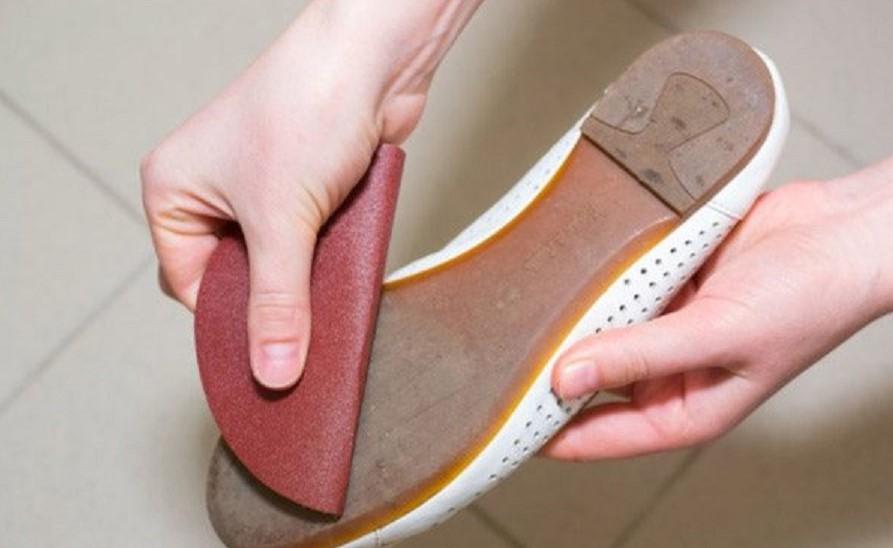
Use masking tape
Masking tape can improve traction in new shoes. It’s very simple and is easily installed. There are just masking tape and scissors required. Cut the tape into small strips and put it in your sneakers. Make sure it is clean, with no smudges. Consider forming cross shapes on tape for optimum results.
Masking tape has one disadvantage: it is useless in dry conditions. Eventually, tapes wear out and need replacement.
Use sand and spray adhesive
Placing sand onto your shoe can make friction, creating a non-slip sole and making your shoe slip-resistant. The sand will be limited to use under wet or snow conditions.
Play sand or construction sand will be used for this purpose. Make sure all the sand is clean. The spray adhesive is needed in order to put sand on your soles. Diffuse adhesive on your feet and put sand around like a powder. Wait for a little before using the shoe.
Sand has the disadvantage that it can create a mess. The sand can eventually fall from the shoe and spread around.

Walk on rough surfaces
Walking through rough surfaces can easily scuff shoe soles, which makes shoes non-slip. If you walk over rough terrain, you can reduce your weight and make it appear thinner. It can take longer to make a shoe and the heel more painful to break out.
Keep in mind that rough surfaces can result in a more comfortable shoe. If you are removing your boots or rubbing them with your hand, it may cause scratches or other damage. It is recommended unless it is a new pair.
Add a salt and rubber glue mixture
Mixing salt and rubber glue creates an uneven surface that gives you traction on the shoe sole of your footwear.
It is cheap for you to create a grip on slick surfaces and keep feet from falling out from under your feet.
It is inexpensive because salt and rubber glue are cheap products you will see in a lot of home improvement shops. Don’t forget to let your shoes dry completely.

Use adhesive bandages or adhesive pads
Please ensure that your shoes don’t contain dirt, or adhesive bandage won’t hold onto shoe soles. Attach two adhesive bandages to the sole and a bandage at the heel.
Apply the adhesive bandage to ensure the secure attachment of the bands.
This method is not quite as durable as other methods, but it is a useful and permanent remedy. During use, the adhesive bandage can be pulled out easily – be aware of this.
Use grip pads
The grip pad provides the needed traction for your feet. This method is effective on shoes that are not slippery, as it does not compromise the structure of the shoe.
A grip pad is another inexpensive trick for those with limited budgets. Use grip pads to improve grip without compromising the footwear’s stability.
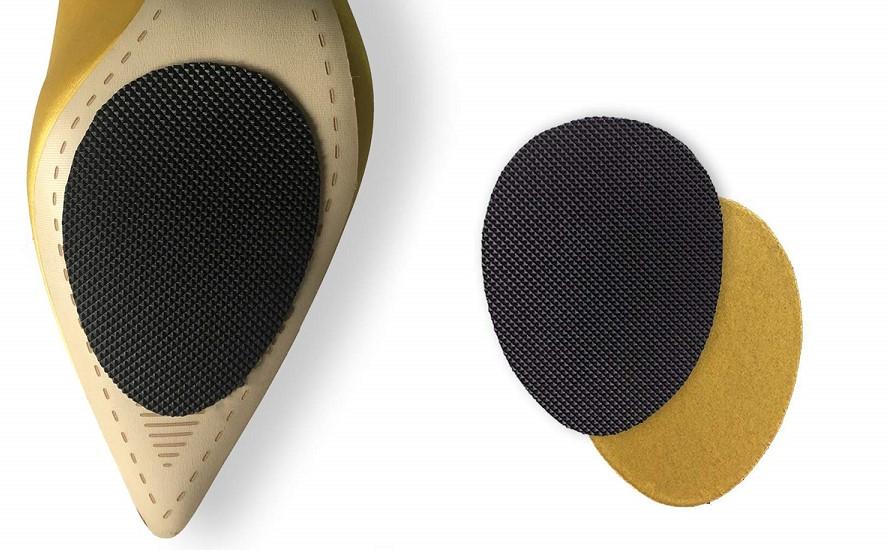
Use puff paints
Puff Paint is a craft paint that is used for creating 3D effects on the surface of objects. This product can be adapted to different types of surfaces, including plastic rubber fabrics and wood.
Puff paint can be applied to a shoe’s base or to a design or pattern. As the paint dries, it creates a rough texture, ideal for use when you have sneakers to grip. Plus, this makes the shoes more personalized. Before putting on paint, make sure it looks clean with no stains or dust. The shoe should be wiped clean using rubbing alcohol.
After cleaning thoroughly, let it air dry completely. Apply puffy paint to bare feet.
Scuff the outsoles
A way to avoid making your shoes slippery is to scrape off the outsoles. Then, the shoe’s soles are pressed against hard surfaces. When an outsole gets scuffed, they are more secure and don’t slip easily.
Having a rubbing surface on a shoe’s soles helps you avoid blisters, especially in shoes that have been worn for years.
It is advisable however to use it cautiously. When the outsole gets worn out too easily, you can eventually ruin the shoes. Some shoe soles may be resistant to the use of cardboard on flats. It is possible to remove outsole damage with these materials:

Use a traction spray or grip spray
Traction and grip spray are types of non-slip spray and are fantastic ways of improving the traction of the shoe in the long term.
The grip sprays and traction sprays have special substances in them that can create friction from slipping on sluggish surfaces. Tractor spray is ideal for use in cold weather.
Make sure that the soles of your shoes are properly maintained in advance of putting on a traction spray. There shouldn’t be anything contaminating your surface.
Apply the spray at least six inches off the sole of the shoe. Spray evenly across the surfaces. Don’t overspray. Let them dry completely for at least four hours before using them. Always shake the container carefully before use.
Traction spray is available for tennis shoes, gym shoes, and winter boots.
Other ways to make shoes non slip
Athletic shoes, such as tennis shoes, are a popular choice for their flexibility and comfort. To make tennis shoes non-slip, adding a rubber sole can provide better traction on slippery surfaces.
For dress shoes or new shoes that need to be made slip-resistant, adhesive bandages can be placed on the bottom of the shoe sole to provide additional grip.
An ankle strap can also be added to provide extra support and stability.
Additionally, non-slip soles can be purchased and attached to existing shoes to fix slippery shoes or to wear non-slip shoes in the workplace.
Even old shoes can be made slip-resistant with a few simple steps. For work boots or shoes with a heel counter, adding a non-slip pad firmly to the bottom can provide more traction on slippery surfaces. If too much material is used, it can affect the shoe’s flexibility and comfort.
Duct tape can also be a quick solution to add more grip, although it may not be the most durable option. For those looking for a more permanent solution, a local hardware store offers a variety of products that can be added to the soles of your shoe to increase slip resistance.
Even fashion brands are starting to produce slip-resistant shoes that can provide style and safety at the same time.
By taking these steps, it’s possible to transform any shoe into a slip-resistant shoe that can help prevent slips and falls in the workplace.

FAQ
How do you make shoes slip proof?
It can be very easy to scuff your soles with sandpaper, nails, or any other material with rough surfaces e.g. stone, gravel, or rock. Just rub the rough surface into the shoe until it has some tiny crack in it.
Can I make my shoes more slip resistant?
Use Traction Spray to protect the footwear. One good winter footwear product is shoe adhesive spray. AKA anti-slip coating in footwear. It’s like a hair spray, but lasts longer than most. It is not necessary to slip and get on the ice when rubbing on the sand!
How can I make my shoes non-slip with hot glue?
Use an abrasive heat gun to glue even spacing or even lines on the shoe. Based on the temperature at your location, you should wait until all the adhesive has dried up before putting on the shoes. It helps in releasing and leveling adhesive.
What can I put on my shoes for traction?
There are several products that you can use to increase traction on your shoes, especially on slippery surfaces. Some of these include:
1. Shoe grips or non-slip pads: These are specially designed pads that you can attach to the bottom of your shoes to provide additional grip and traction.
2. Adhesive strips: These are strips of adhesive tape that you can attach to the bottom of your shoes to increase traction.
3. Traction spray: This is a spray-on product that you can apply to the soles of your shoes to increase traction. It works by creating a thin layer of a rubber-like material that helps grip the ground.
4. Sandpaper: You can roughen the soles of your shoes with sandpaper to create more traction.
5. Traction cleats: These are small metal or rubber cleats that you can attach to the soles of your shoes to increase traction. They are particularly useful for walking on ice or snow.
6. Duct tape: You can wrap it around the soles of your shoes to create additional grip and traction.
Overall, there are many products that you can use to increase traction on your shoes, depending on your needs and the type of surface you will be walking on.
Final thoughts
Slip-resistant shoes are an essential safety feature in many industries and workplaces, helping to prevent slips and falls that can result in serious injuries.
With the right materials and techniques, it’s possible to make shoes non-slip and reduce the risk of accidents.
Whether you choose to add high-quality tennis shoes with a rubber sole or use a nail file to roughen the surface of the shoe sole, there are many ways to add traction and improve grip.
Toe grips and ankle straps can also provide additional support and stability, making it easier to walk on slippery surfaces.
By taking the time to make shoes slip-resistant, you can help protect yourself and others from workplace accidents and injuries.

